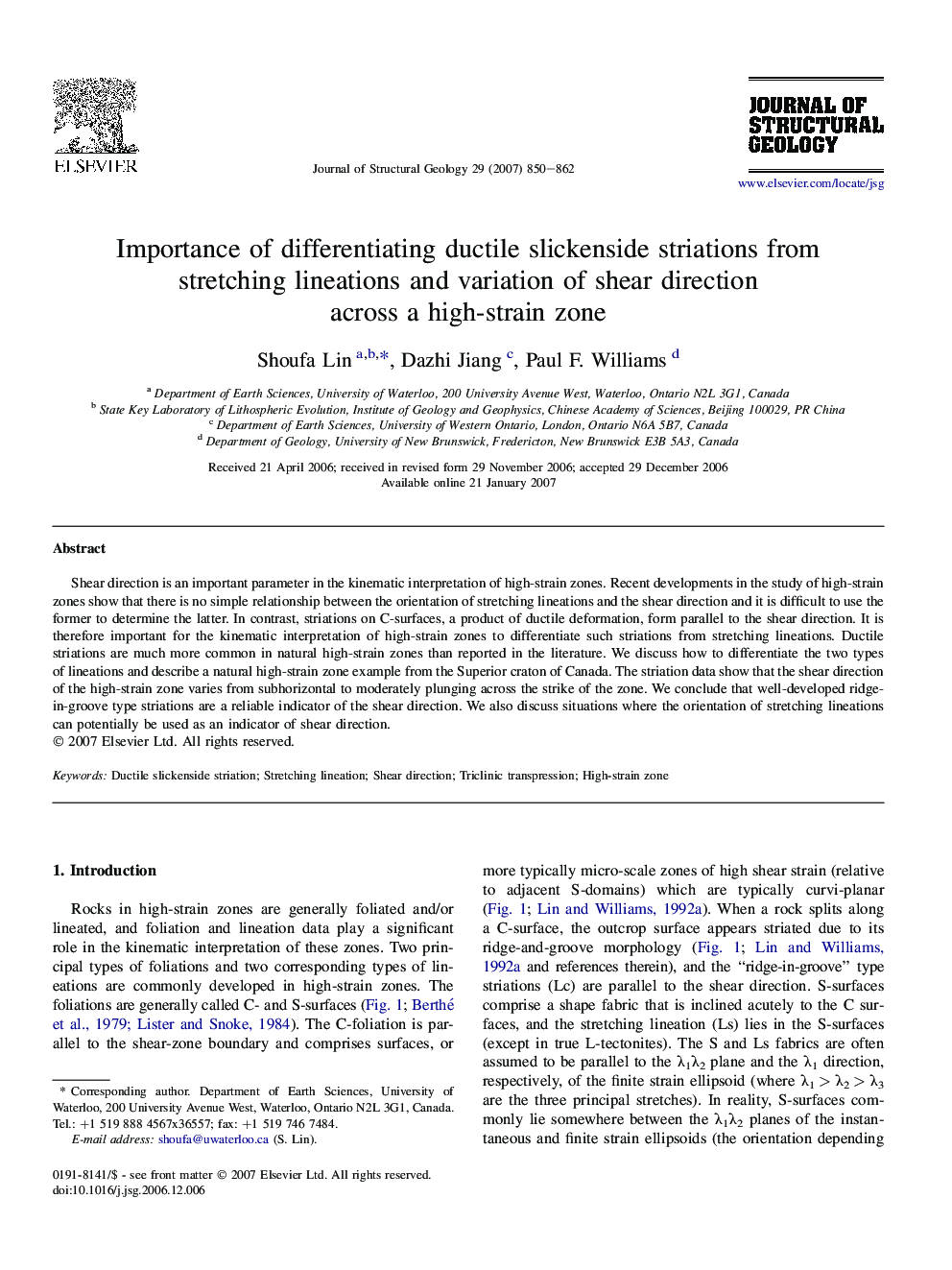| Article ID | Journal | Published Year | Pages | File Type |
|---|---|---|---|---|
| 4733959 | Journal of Structural Geology | 2007 | 13 Pages |
Abstract
Shear direction is an important parameter in the kinematic interpretation of high-strain zones. Recent developments in the study of high-strain zones show that there is no simple relationship between the orientation of stretching lineations and the shear direction and it is difficult to use the former to determine the latter. In contrast, striations on C-surfaces, a product of ductile deformation, form parallel to the shear direction. It is therefore important for the kinematic interpretation of high-strain zones to differentiate such striations from stretching lineations. Ductile striations are much more common in natural high-strain zones than reported in the literature. We discuss how to differentiate the two types of lineations and describe a natural high-strain zone example from the Superior craton of Canada. The striation data show that the shear direction of the high-strain zone varies from subhorizontal to moderately plunging across the strike of the zone. We conclude that well-developed ridge-in-groove type striations are a reliable indicator of the shear direction. We also discuss situations where the orientation of stretching lineations can potentially be used as an indicator of shear direction.
Related Topics
Physical Sciences and Engineering
Earth and Planetary Sciences
Geology
Authors
Shoufa Lin, Dazhi Jiang, Paul F. Williams,
